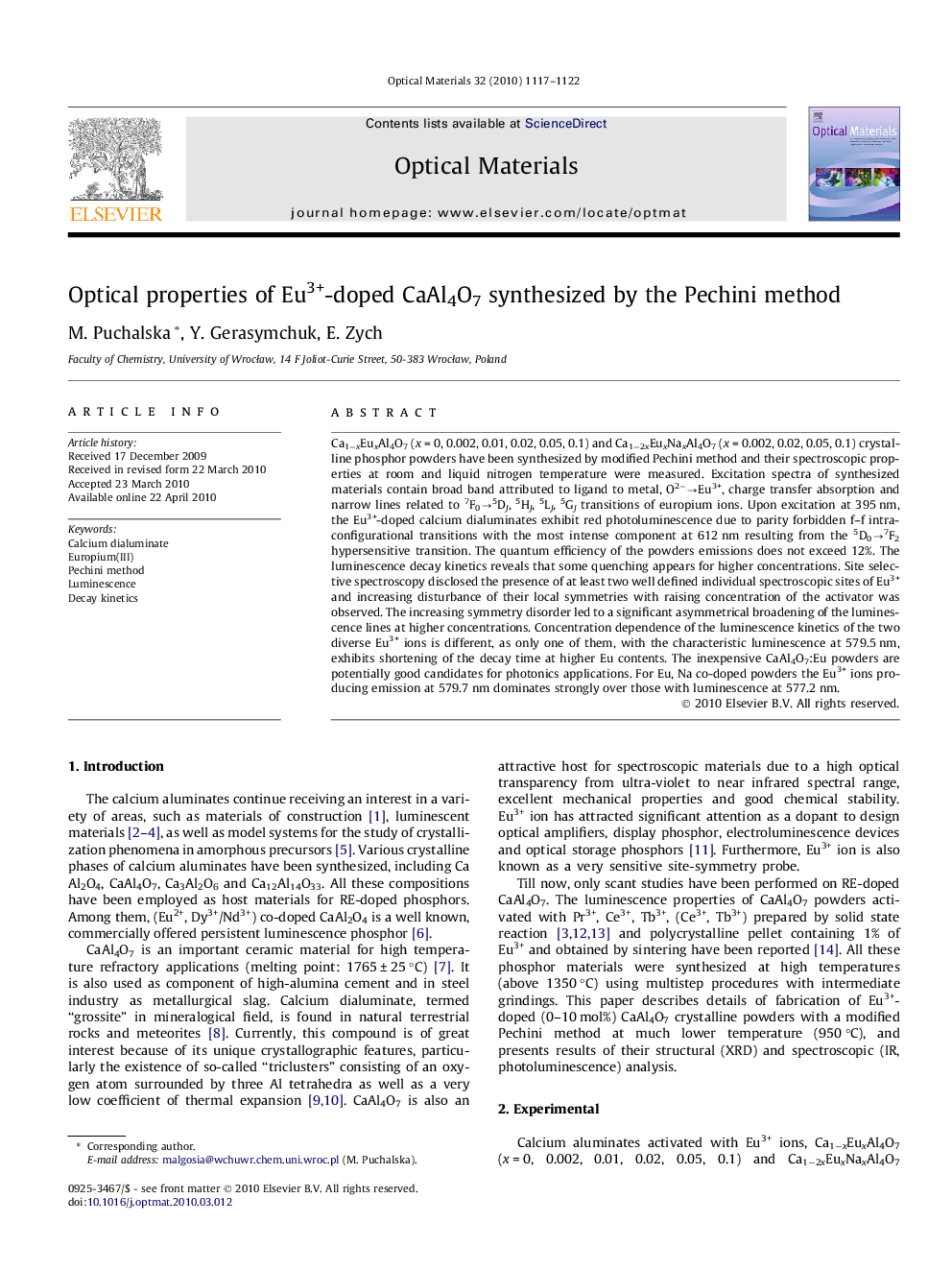| Article ID | Journal | Published Year | Pages | File Type |
|---|---|---|---|---|
| 1495540 | Optical Materials | 2010 | 6 Pages |
Ca1−xEuxAl4O7 (x = 0, 0.002, 0.01, 0.02, 0.05, 0.1) and Ca1−2xEuxNaxAl4O7 (x = 0.002, 0.02, 0.05, 0.1) crystalline phosphor powders have been synthesized by modified Pechini method and their spectroscopic properties at room and liquid nitrogen temperature were measured. Excitation spectra of synthesized materials contain broad band attributed to ligand to metal, O2−→Eu3+, charge transfer absorption and narrow lines related to 7F0→5DJ, 5HJ, 5LJ, 5GJ transitions of europium ions. Upon excitation at 395 nm, the Eu3+-doped calcium dialuminates exhibit red photoluminescence due to parity forbidden f–f intra-configurational transitions with the most intense component at 612 nm resulting from the 5D0→7F2 hypersensitive transition. The quantum efficiency of the powders emissions does not exceed 12%. The luminescence decay kinetics reveals that some quenching appears for higher concentrations. Site selective spectroscopy disclosed the presence of at least two well defined individual spectroscopic sites of Eu3+ and increasing disturbance of their local symmetries with raising concentration of the activator was observed. The increasing symmetry disorder led to a significant asymmetrical broadening of the luminescence lines at higher concentrations. Concentration dependence of the luminescence kinetics of the two diverse Eu3+ ions is different, as only one of them, with the characteristic luminescence at 579.5 nm, exhibits shortening of the decay time at higher Eu contents. The inexpensive CaAl4O7:Eu powders are potentially good candidates for photonics applications. For Eu, Na co-doped powders the Eu3+ ions producing emission at 579.7 nm dominates strongly over those with luminescence at 577.2 nm.
